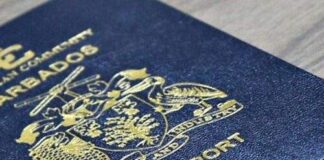Nationals from these nations all make up the top eight immigrant groups in the Big Apple.
According to the latest ‘Newest New Yorkers Immigration Report,’ released by New York City’s outgoing Mayor, Mike Bloomberg Wednesday, the city’s immigrants have reached new peak at more than 3 million residents with the majority being from the Caribbean and Latin America.
This new report shows that the largest immigrant group in the City continues to hail from the Dominican Republic, with 380,200 residents throughout the five boroughs.
Immigrants from Mexico (186,300 residents) were in the third place, with a 52 percent increase over the last decade, and were followed by Jamaicans (169,200) at fourth and Guyanese (139,900) at fifth.
Ecuador, Haiti and Trinidad and Tobago were ranked at sixth, seventh and eighth, respectively.
China, with 350,200 residents, too the number two spot with a growth of 34 percent. If these growth rates continue, Chinese would likely be the city’s largest immigrant group in the next few years.
Latin America is now the largest area of origin, comprising nearly one-third of the City’s foreign-born population, followed by Asia at 28 percent, and the non-Hispanic Caribbean at 19 percent. Africa accounts for 4 percent.
This large flow of immigrants from Latin America, Asia, and the Caribbean has reshaped the racial and ethnic composition of New York from a largely European white city to a diverse mix where no one group is in the majority, the report said.
The strength of immigrants is most evident in Queens, NY, where the largest percentage of the newest New Yorkers has settled with nearly one-half of the borough’s residents being foreign-born.
Immigrants comprise 47 percent of all employed residents across all major industries, including large concentrations in construction and services.
Immigrants also are disproportionately represented among those who start new businesses, providing a continuous infusion of economic vitality that serves the neighborhoods of New York.
The immigrant population also drives the demand for housing as close to one-half of all housing units that were occupied for the first time after 2000 had an immigrant householder.
“Having an accurate picture of our foreign born residents, and how they’re doing with respect to their housing, education, employment and economic status enables us to target support that helps immigrants establish themselves and participate in the diverse opportunities our city offers,” said Mayor Bloomberg. “Our nation has the opportunity to finally enact real immigration reform in Congress, and this edition of the Newest New Yorkers is an important resource that helps to build a case for reform so that we can continue to be a magnet of opportunity and also continue to attract some of the brightest minds in the world.”
Since the passage of the landmark Immigration and Nationality Amendments of 1965, New York’s foreign-born population has more than doubled and the foreign-born share of the City’s population, which was 18 percent in 1970, has risen to 37 percent.








